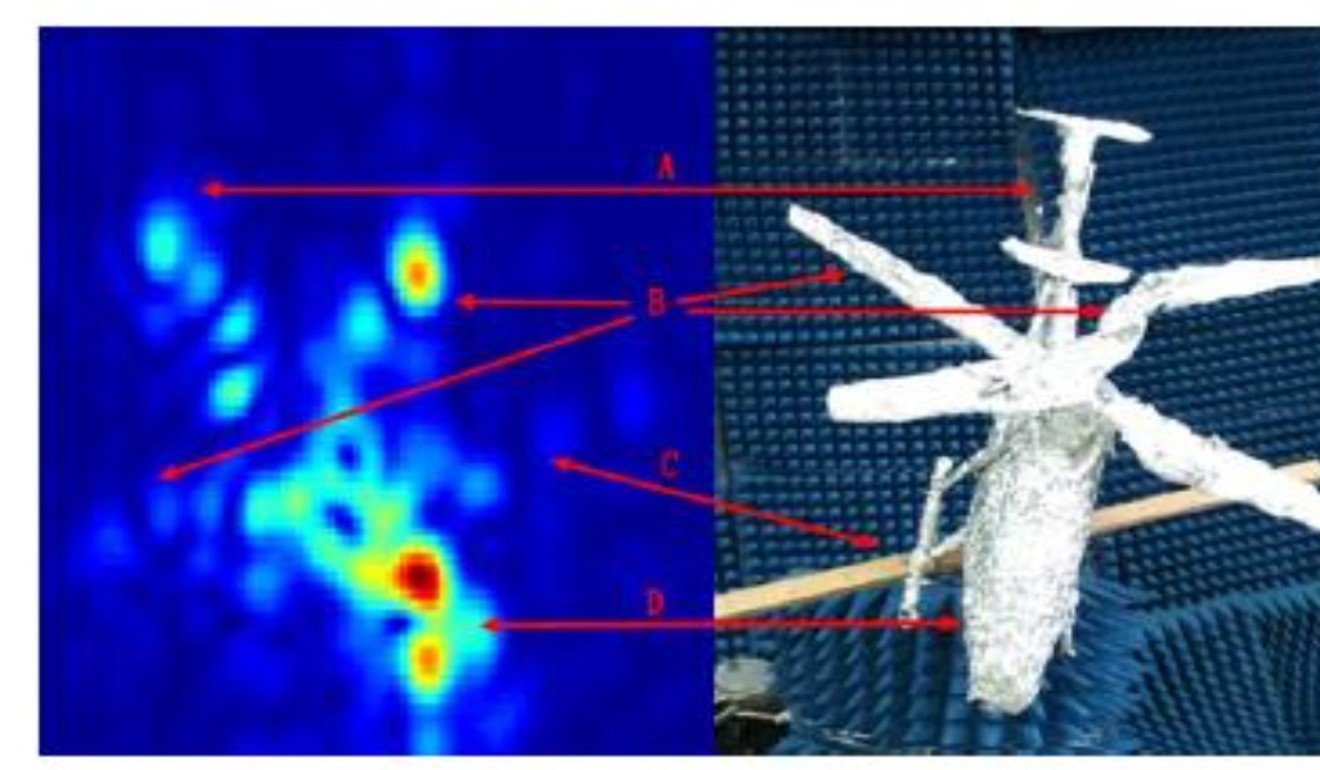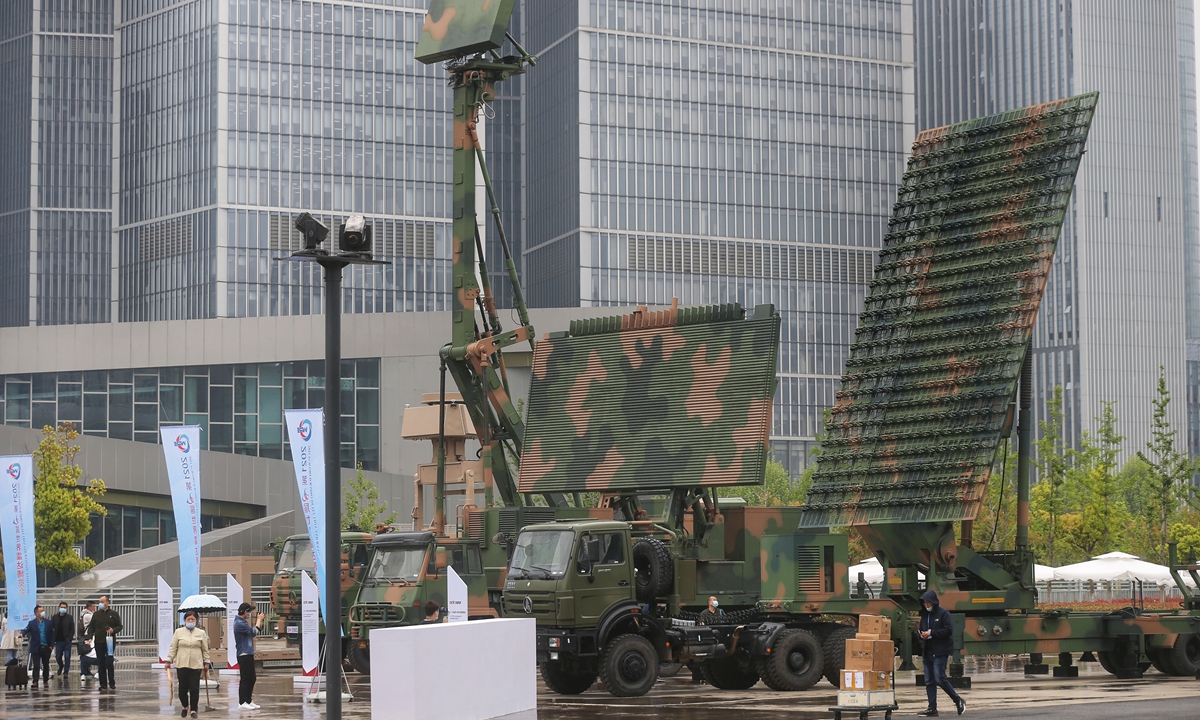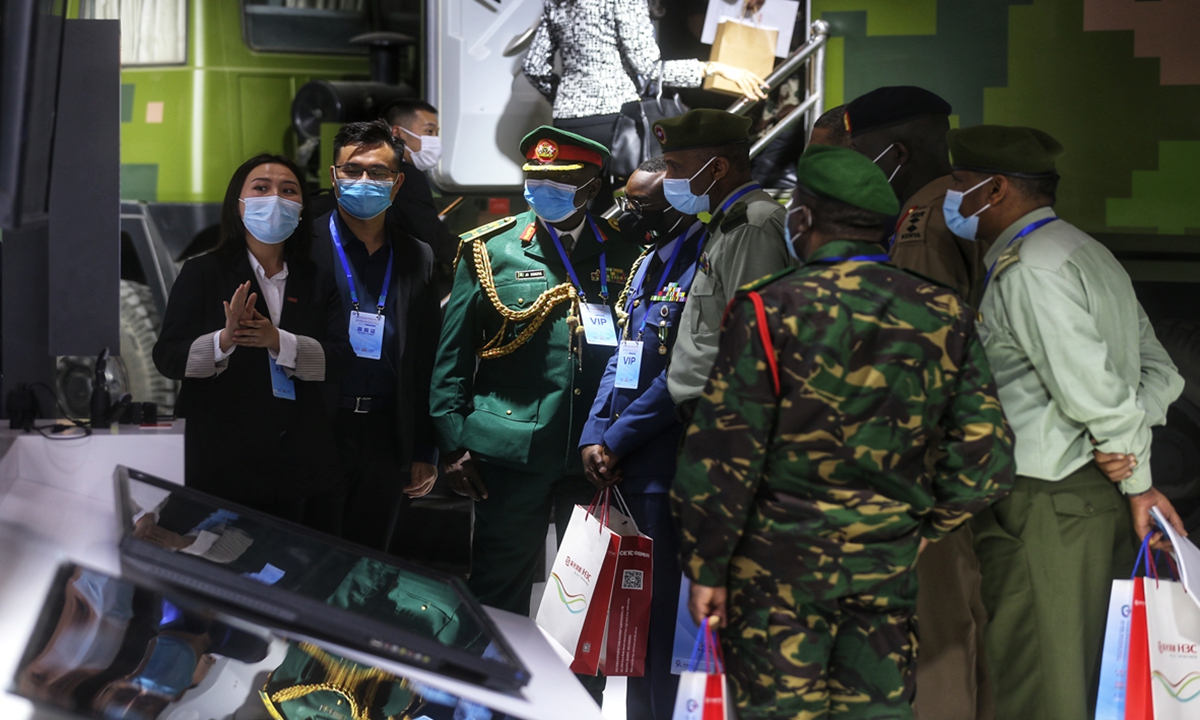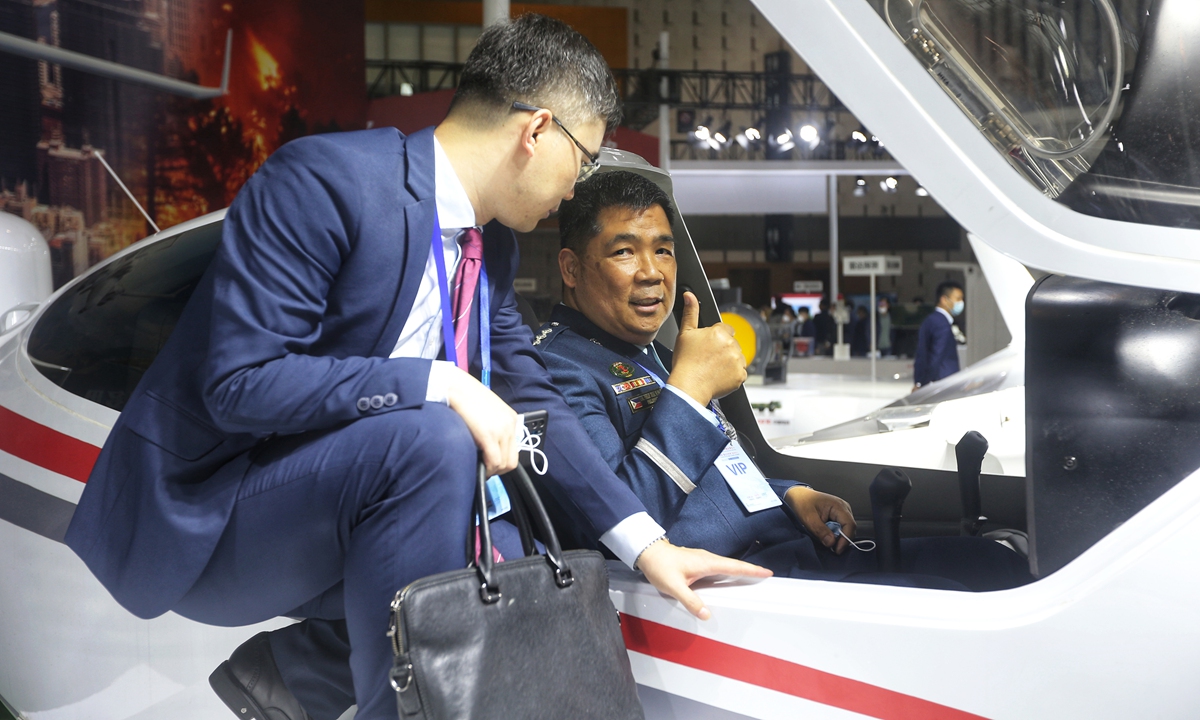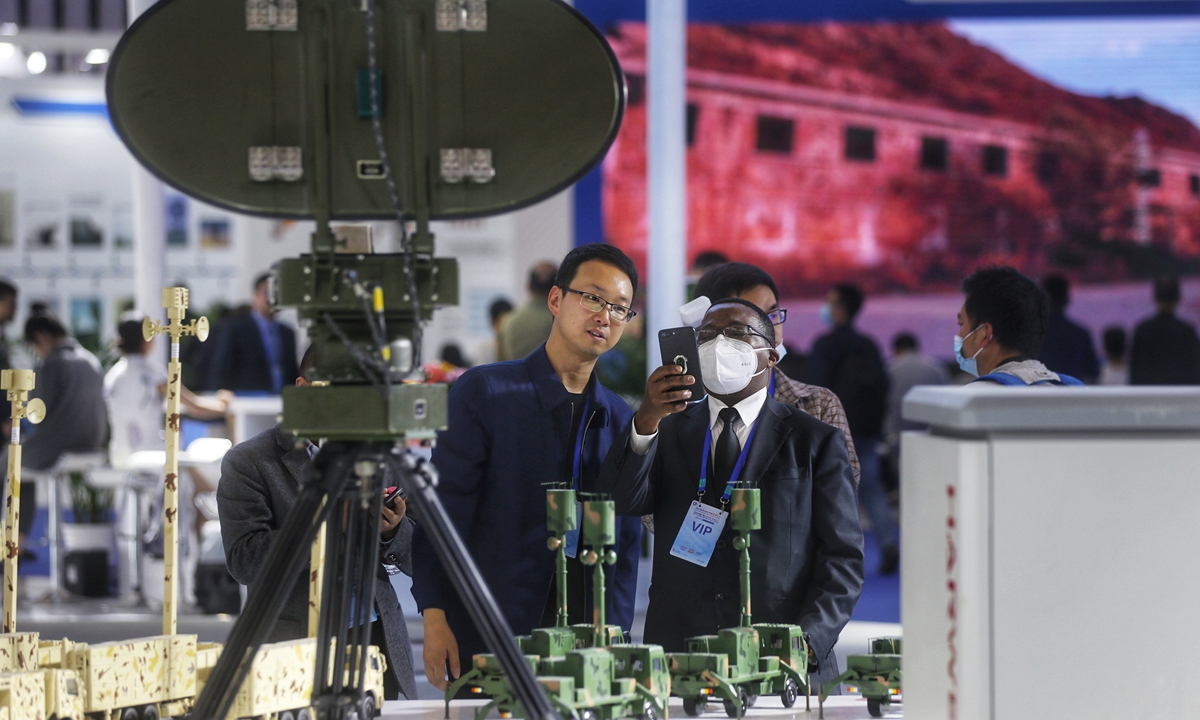Chinese developed anti-stealth radar is superior to its foreign counterparts: top radar scientist
Unmatched performance
By
and
in Nanjing
Published: Apr 24, 2021 12:34 PM
More than 30,000 visitors from home and abroad visited the 9th World Radar Detection & Ranging Expo. Photo: Cui Meng/GT
The development of China's radar equipment is on par with the most advanced level in the world, and the development of artificial intelligence (AI) technologies could bring important changes to the radar industry in the future, as their applications could significantly enhance operational efficiency of radar systems, a top Chinese scientist in the radar industry said.
Hu Mingchun, director of the No.14 Research Institute at the state-owned China Electronics Technology Group Co, made the statements in an exclusive interview with the Global Times on the sidelines of the 9th World Radar Expo held in Nanjing, capital of East China's Jiangsu Province on Friday. He introduced star items the research institute brought to the exhibition, including
like the SLC-7 L-band 3D surveillance radar system and YLC-8E UHF-band 3D surveillance radar system as well as
like YLC-48 portable multipurpose reconnaissance radar.
The antenna of the YLC-8E is gigantic. With its high power and cutting-edge information process technology, it can detect even the most advanced stealth aircraft. It can also detect other types of targets at long range and high definition with its key parameters superior, making it superior to foreign competitors.
The SLC-7, on the other hand, can take on even more types of targets making it much more versatile than many other competing products.
Previous radar systems often had dedicated functions, but this versatile radar can not only detect stealth targets but also be used in fields like early warning and artillery reconnaissance. This means that this radar alone can serve the purpose of multiple radars operating at the same time, Hu said.
Hu Mingchun, director of the No.14 Research Institute under China Electronics Technology Group Co. Photo: Cui Meng/GT
World-class development
Dubbed the terminator of drones, the YLC-48 portable multifunctional reconnaissance radar has outstanding ability to detect low-altitude, small and slow targets. It adopts the domestic pioneering circular digital phased array system and, thanks to the wide use of digital integrated circuits, the radar is small, light and mobile, making it suitable for all kinds of lightweight weapons platforms, for all-weather operations with rapid deployment and withdrawal.
Low-altitude, small and slow targets like drones pose many threats to air defense, as they have become some of the major killing weapons in real combat, Hu said, noting that as drones have also become easily accessible to normal people, incidents involving unauthorized flying of drones are also becoming frequent.
"That is why we are bringing radar systems specially designed to deal with low-altitude, small and slow targets," Hu said.
China's radars are on par with their most advanced counterparts in the world, and this is because China's latest achievements in the electronics and information industry were all reflected in the country's radar equipment, Hu said.
Large military conglomerates including China Electronics Technology Group Co and China Electronics Information Industry Group Co are showcasing their radar technologies at the Expo. Photo: Cui Meng/GT
"In some fields, China has already been in the leading place, because we are now on the path of independent research and development, and we do not have anything to make reference to," Hu told the Global Times.
The fire control radar equipped on the China-Pakistan jointly developed JF-17 fighter jet is already at the most advanced level in the world, while the likes of China's anti-stealth radar installations, the "Chinese Aegis" ship-borne radar systems and the airborne radar on the KJ-2000 early warning aircraft can all rival their cutting-edge foreign counterparts, according to Hu.
This year marks the 100th anniversary of the founding of the Communist Party of China (CPC).
Hu said that the history of radar development in China is a miniature of the history of struggle under the leadership of the CPC.
According to Hu, the radar industry has played an important role in every stage of China's development. After the founding of the People's Republic of China, the No.14 Research Institute provided all the radar equipment for the War to Resist US Aggression and Aid Korea (1950-53), which laid a foundation for the eventual victory. When the US warplanes took off, China's radar could detect them in time and arrange anti-aircraft artillery and fighter jets to intercept them.
"Not long ago, when the country issued commemorative medals for those who fought in the war, many in our institute got the medals," Hu told the Global Times.
The No.14 Research Institute is also constantly introducing new technologies and products in response to the country's needs. During the military parade marking the 70th anniversary of the founding of the People's Republic of China, the early warning aircraft of the air force echelon through Tiananmen Square, the KJ-2000, carried the institute's early warning radar, and many more fighter jets were also equipped with the institute's radars.
The 9th World Radar Detection & Ranging Expo kicks off in Nanjing on April 22. Photo: Cui Meng/GT
AI the future trend
When it comes to the development direction of China's radar equipment in the future, Hu said it is a trend from the development of single radars to the development of radar systems. In addition, the development of electronic information technology and hardware technology will help develop radars to deliver higher performance and have stronger capabilities with smaller sizes.
With the continuous improvement of computer processing and calculation, the radar based on software technology is also expected to see a big development, Hu said.
A foreign visitor is taking photo of a radar system displayed at the Expo. Photo: Cui Meng/GT
The application and rapid development of AI will also play a very important role in the subsequent application of radar. Hu said the application of AI could turn traditional radars into intelligent ones, so that they can make new adjustments according to the environment; to learn, to accumulate experience and constantly improve their ability. AI can assist the operator's judgment and decision making, improve operation accuracy, and greatly reduce the operator's pressure.
With AI, in the future the operator could take what's in his or her mind and transmit it directly to the machine through sensors instead of operating keyboards and other devices, Hu said. "In the past, you need to use your eyes and hands. Now, you need only your eyes in order to let the radar do what you want. Under complex or emergency situations, this can greatly enhance the operational efficiency and solve many problems that we could not in the past."


